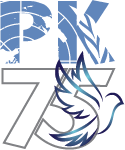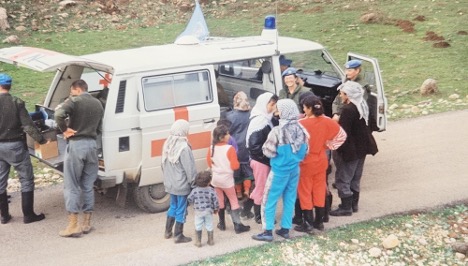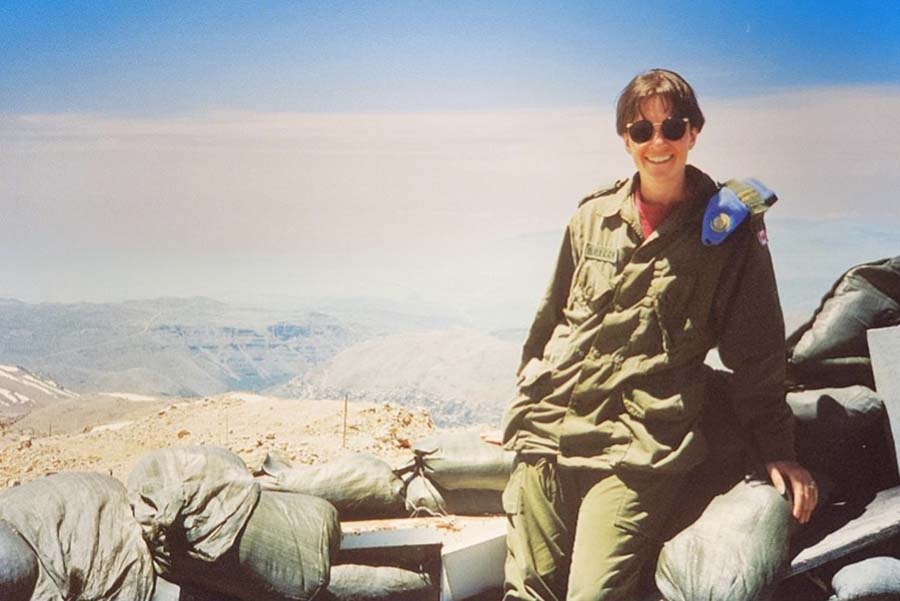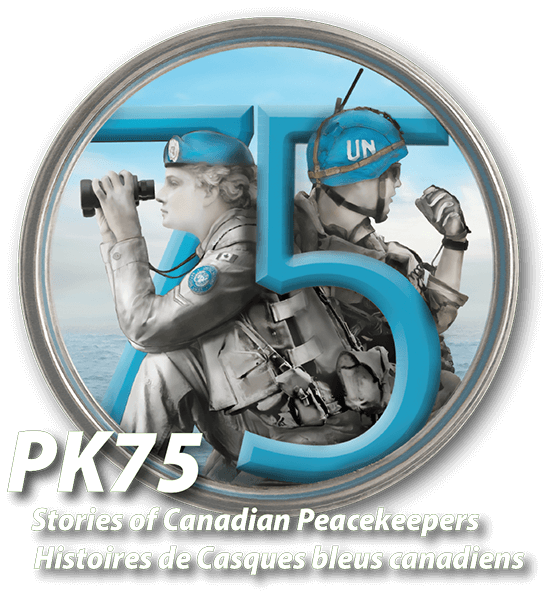

Calgary, AB, Canada
Karen Breeck
Current Location: Ottawa, ON, Canada
When I arrived at my post with the United Nations Disengagement Observer Force (UNDOF) in 1994, I must admit it came as a wee bit of a surprise to find out that I was the only woman military officer in a joint force of over 1500 peacekeepers!
At that time, Canada, Poland, and Austria shared the responsibilities of UNDOF. The Canadian and Polish forces were stationed in the Israeli-occupied Syrian territory on one side of the disengagement zone and the Austrian forces were located on the Syrian side.
Part of my job description was to be ready “for anything.” Although military people on peacekeeping operations are usually fit and healthy, terrible things can happen. A prominently placed plaque in the Canadian camp served as a reminder of the very real possibility of such tragic events. On 9 August 1974, a Canadian Buffalo aircraft on a scheduled flight from Lebanon to Damascus was shot down by Syrian surface-to-air missiles killing 9 Canadian crew and passengers. This date, August 9th, is formally recognized in Canada as our “National Peacekeepers Day.”
To be ready for anything, I had to travel to Syria and Israel to build relationships with, and gather information from, the local civilian medical communities. I needed to understand their capabilities to support us in case of emergency. As the only Canadian military doctor in the Middle East, I was also asked to help other Canadian military members working in the area, including United Nations Military Observers.
At the time, the political situation in Syria was relatively calm. As the Canadian camp was located on the Israeli side, our opportunities to travel on days off through the disengagement zone to the Syrian side still required special planning and permissions. Whenever it was possible to coordinate a day off, many of the available Canadian officers would go together to explore Syria.
One of my favorite memories of Syria was visiting Palmyra. This ancient oasis lies just over two hundred and fifty kilometres from Damascus. It used to be a commonly used rest spot for the weary travellers travelling along the Silk Trade Route. At one point in Palmyra’s long and fascinating history, it was ruled by the Queen Regent Zenobia who singlehandedly held the Romans off against their initial take-over attempts.
But it wasn’t just the incredible geography and history of Syria that caught my heart. Wherever we went — border crossing, road stops, local markets — the reaction felt the same. In Syria, unlike in Israel, all eyes were on me.
Many Syrian men were curious about the presence of a uniformed woman in their midst, especially when I was driving. The English-speaking male shop owners would often try to entice me to join them for a sit-down chat, always promising hot sweet “chai” tea as my reward. I admit I initially assumed, through Western eyes, these offers were veiled sales tactics, attempts to convince me to buy one of their products at several times its normal price. Although that was the correct assessment in a few cases, for the most part I was wrong. Many of these men just wanted to know more about a woman’s life in Canada and in the military. These conversations inevitably resulted in their sharing of well-loved photographs of their wives and daughters followed by enthusiastic invitations to come to their homes. These men not only wanted me to meet the women in their lives but to allow those women to hear all these stories of Canadian life first-hand.
One of the things my peacekeeping experience taught me is that parents are parents worldwide. They all love their children. I have no words that could ever express my heartbreak for the suffering that Syria and its people have endured in the years since my tour. I wish them, and the world, more peace.
Biography
As a child, growing up in Calgary, AB I knew very little about the Canadian military. The first time I remember meeting a real live member of the Canadian Armed Forces was in 1983. I was studying marine biology at Memorial University of Newfoundland and my assigned university roommate was another “come from away”. She had joined the Army Reserves in Winnipeg before starting university and she transferred to a new Reserve unit in St. John’s. I watched her all year — shining shoes and ironing uniforms for her part-time job. She always seemed to be doing fun things, she liked the people she was working with, and the pay seemed really good, especially for those times.
I never seriously thought about joining the military until several years later. I had started medical school and a recruiter came to speak to our class. One of the biggest appeals about joining up, besides having all my school costs paid for, was the potential of becoming a Canadian peacekeeper.
I had already been lucky enough to have done a fair amount of travelling, including to fragile and conflict-affected areas of the world. I saw first-hand that diplomacy couldn’t be the only tool in your toolkit to keep the world safe. There are times and places where a neutral third-party force, such as UN peacekeepers, is needed. I instinctively understood what an important role any respected impartial country could play in support of peace operations. Peacekeeping seemed to me like a natural fit for Canada and Canadian values and ideals. There is a reason that it was a Canadian who came up with the idea of UN peacekeepers in the first place! Shout out to Lester B. Pearson!
Most Canadian soldiers on UN missions belong to army units and come from army trades. As an Air Force medical officer, it took some time to finally convince my career manager to assign me to a UN peacekeeping mission. Finally in 1994, I got to serve six months with the United Nations Disengagement Observer Force (UNDOF) which monitors the 1973 Yom Kippur War ceasefire between Syria and Israel.
That was only one of the many amazing things that I got to do in my twenty years of service in the Canadian Armed Forces. I was lucky enough to receive additional postgraduate training in aerospace and occupational medicine. I participated in search and rescue missions on CH-133 Labrador helicopters along the east coast of Canada, Arctic patrol missions on CP-140 Aurora maritime surveillance aircraft, humanitarian missions on CP-130 Hercules transport aircraft, disaster relief missions on CH-146 Griffon tactical helicopters, and aeromedical evacuations, including from UN mission sites, on CC-144 Challenger jets. I also got to serve as the flight surgeon (aviation doctor) at the Canadian Space Agency in Montréal, QC and the Snowbirds 431 Air Demonstration Squadron in Moose Jaw, SK.
By the end of my career, I had worked as a military physician in every province of Canada and in well over 20 countries. However, my career wasn’t all travelling and flying around. I also completed administrative postings where I had the opportunity to help develop medical and Air Force policies, do research, and help develop enhanced medical training and support packages for UN Military Observers.
Even though my personal military peacekeeping days are long over, my interest in the UN and the ideals of peace operations remain. I have stayed involved in this area by volunteering with the Federation of Medical Women of Canada, and the Women, Peace and Security Network. The Network represents over 80 different individuals and groups that encourage the Canadian government to support the implementation of the United Nations Security Council Resolutions on Women, Peace and Security. Two of the goals of these resolutions is to promote and support women’s participation in conflict prevention and resolution, and to promote and safeguard the human rights of women and girls. Through programs like the “Elsie Initiative for Women in Peace Operations” Canada helps to ensure equality, empowerment, respect, and inclusion of all sexes and genders, especially in fragile or conflict-affected populations.
As I look back, my military career seems like two decades of a breathtaking and exhilarating roller coaster ride. Despite the many highs during my military career, my greatest moment of pride remains that of being a UN peacekeeper, blue beret on my head and Canadian flag on my shoulder.

Capt Breeck on medical patrol in Syria.

Capt Breeck visiting a patrol in Syria.


